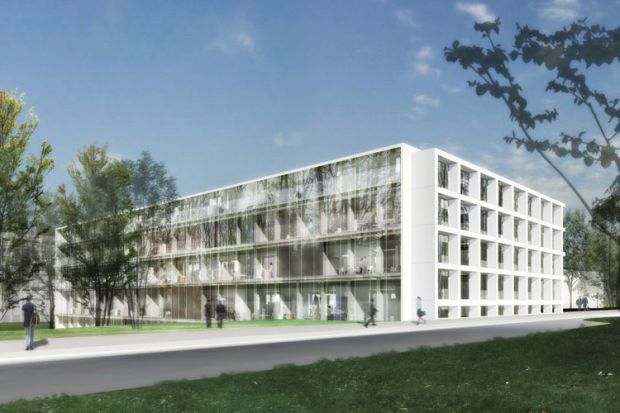Moving 19 higher education institutions to a new “French Silicon Valley” on the edge of Paris sounds like a daunting task.
The creation of the University of Paris-Saclay’s campus will cost €2 billion (£1.4 billion) and a government-funded €2.5 billion (£1.8 billion) extension of the Paris Metro will connect the high-tech hub to the centre of the French capital in 35 minutes.
However, Dominique Vernay, the president of Paris-Saclay, has bigger concerns than the infrastructure challenges involved in constructing the university’s 1,300-acre campus over the next few years, namely how to get 19 fiercely independent organisations to pull together and move in the same direction.
“This requires a drastic change in the French mentality,” admits Vernay, a former technical director of Thales, a French multinational specialising in electrical products, and one of the world’s largest defence contractors.
“Some of these institutions have a long history going back to the time of Napoleon, while others are much younger,” he says in an interview with Times Higher Education.
“They were not that keen to work together in the beginning, but they have taken steps over the past seven years to come together – the commitment was to set up a common organisation.”
To this end, nine of France’s most prestigious grandes écoles, such as the École Polytechnique and the École Normale Supérieure, will work with less selective traditional universities, business schools and national research organisations at Paris-Saclay.
Within 10 years, 12,000 researchers and 70,000 students will be based at the Paris-Saclay campus, with the institution aiming to take its place among the world’s top 10 universities by 2025.
However, does this cluster of outstanding, yet disparate, institutions brought together by the French government actually constitute a university? Vernay believes so, pointing out that master’s degrees and doctorates taught by the constituent colleges are now issued in Paris-Saclay’s name.
Concentrating the various institutions on a single site will enable Paris-Saclay to establish its identity, as well as allowing the different institutions to cooperate far better and extend the scope of their research, he adds.
“They will have bigger, much more diversified laboratories and be able to set up new research teams,” he says.
The Paris-Saclay project has initial funding of €7.5 billion (£5.9 billion). Part of this is a €1 billion (£720 million) endowment provided by the French government to encourage academic collaboration, and carving this income up among competing research interests may prove one of the toughest challenges.
“Some academics thought this extra money would simply be added to their budgets, but we are very strict with the applications [for the cash],” says Vernay.
The competition for funding will continue over the next decade to ensure that Paris-Saclay’s staff produce the internationally excellent research that justifies the state’s extraordinary outlay, he adds.
“Staff are not accustomed to this benchmarking, but they have accepted it is run this way,” he says. “People have agreed to work together on a common plan which has global vision and they will be assessed on a regular basis,” he adds.
Paris-Saclay’s proximity to a number of major French companies located southwest of Paris will also help the university to establish unrivalled links with industry, believes Vernay.
“About 300,000 high-level jobs in industry are located in this area, including those working for Airbus, Peugeot and Renault, whose design centre has about 20,000 designers there,” he says.
“These companies now understand they need to be near academia and we want to find new ways to interact with industry,” he adds.
In this respect, France’s grandes écoles have a far better track record of working with industry than universities, he says.
“About 30 professorial chairs have been awarded by industry to our grandes écoles, so we need to extend those links to universities too,” he says.
Paris-Saclay is the grandest of several mega-universities being funded across France that are designed to encourage world-class research which can be quickly applied to the country’s high-tech manufacturing and service sector. That goal is most likely to be achieved by the close cooperation of students, academics, researchers and industry, Vernay believes.
“Together they can do things that they cannot do on their own,” he says.
Register to continue
Why register?
- Registration is free and only takes a moment
- Once registered, you can read 3 articles a month
- Sign up for our newsletter
Subscribe
Or subscribe for unlimited access to:
- Unlimited access to news, views, insights & reviews
- Digital editions
- Digital access to THE’s university and college rankings analysis
Already registered or a current subscriber? Login





